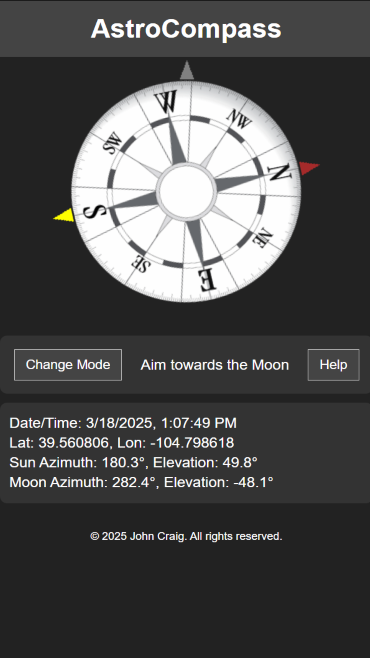
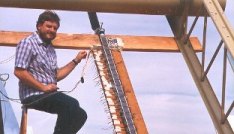
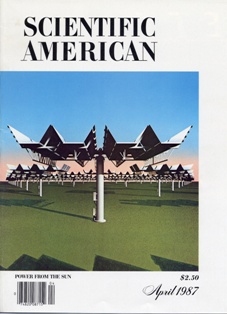
World's largest (at that time) solar energy project at Carrisa Plains, California, as shown on the cover of Scientific American magazine in April, 1987.
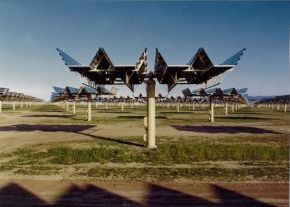
The original photograph that Scientific American borrowed to create their cover. My software controlled and monitored all 880 mirror-enhanced photovoltaic trackers, covering much of a square mile of land.
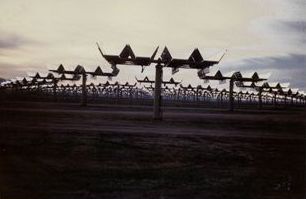
The Carrisa Plains solar power production facility trackers shown in their stowed position, for minimum wind load and interesting photographic opportunities.
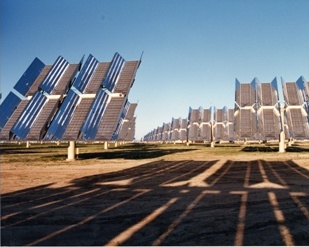
My software controlled each of the 880 trackers independently to face the sun accurately. The mirrors folded extra sunlight onto the photovoltaic panels to increase power output.
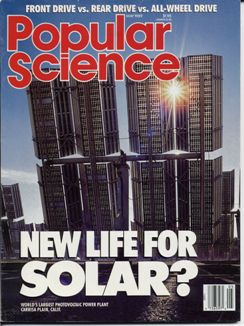
Popular Science magazine also covered the Carrisa Plains project in a very supportive feature article.
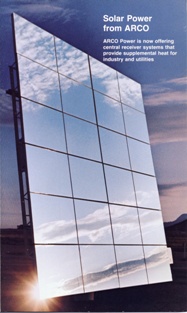
John's boss (later his father-in-law) met John at 4am one morning to arrive at the Sandia Labs site before sunrise. This picture was worth the effort! Our heliostats were used as part of Sandia Lab's solar research and development efforts.
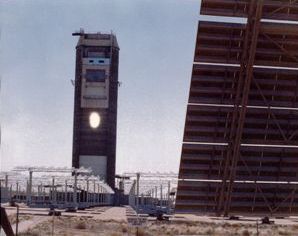
The solar research and development site at Sandia Labs was a fun place to do research. John created similar control software for heliostats and photovoltaic trackers at many other sites, including the Weizmann Institute, Tennessee Valley Authority, sites in Texas and California, and for a site in Qatar.
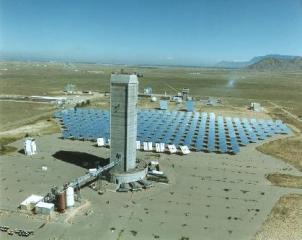
The central receiver tower at Sandia Labs as viewed from a different angle.

Thirty heliostats created steam to thin underground oil in an EOR (Enchanced Oil Recovery) experimental site near Taft, California.
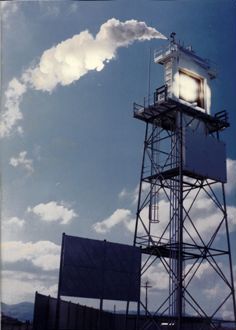
The central receiver used solar energy to create steam to be pumped underground to warm and thin the oil for easier recovery.
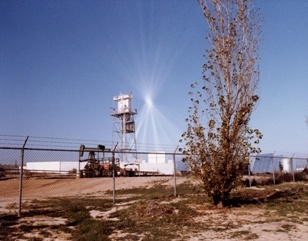
In this photo, each of the 30 EOR heliostats is aimed to focus the sun at a standby position in the open air. The atmospheric conditions allowed the beams to be more visible than usual the day this photo was taken.
The pictures along the left highlight some of the interesting solar energy projects I've been fortunate enough to be able to program, including the world's largest solar power production field (at the time) in the high desert region of California near Carrisa Plains, the Solar Energy Research and Development site at Sandia Labs near Albuquerque, New Mexico, and at several other fascinating sites around the world. My high accuracy sun position algorithms were critical to the proper design of several of these sites.
Interested in a high accuracy sun position
algorithm in any of nine common programming
languages? Please check out my latest book,
available now at Amazon.
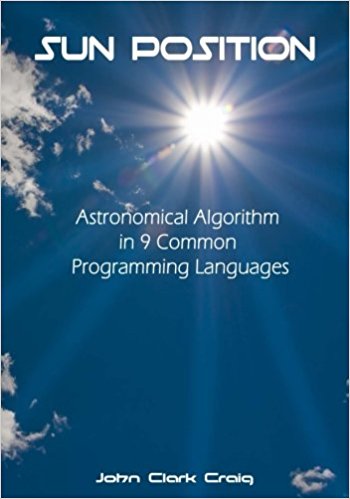

Paperback $19.95
In addition to solar energy, John's passion is the Python programming language. You can see a list of his Microsoft Press, O'Reilly, and other books at craigware.com/books
Here are his solar energy entries in the GE Ecomagination contest. For certain applications they can be very cost effective and much simpler to implement than current techniques. (Ever try to calculate the tilt angle for a fixed panel on the roof of a house that is sitting at a skewed angle to the world? And, how much does it cost to install and maintain a central control computer, with trenching for control cables, etc.?)
Solar Panel Efficiency
Adjustment Made Easy
Photovoltaic Sun
Tracking Made 100% Automatic
John invented a new sundial that tells both
time
and
date
His sun and moon position algorithms have been used to create a
new type of compass. Check out AstroCompass web page
app.
